
What is good onboarding? What patterns (templates, checklist, tips) should you use and why? How should success be defined?
Building great self-serve product-led onboarding is hard. Since every product offers unique value, it’s hard to know what will work for your product. And yet, onboarding is one of the most important parts of the user journey. It’s often the biggest driver of user activation and retention, the key driving metrics for any software business.
Most product onboarding content is clickbait (“Top 10 onboarding tools”) or lacks context (“How to build a good tooltip tour”). This playbook is different. It’s designed to be comprehensive and actionable. It starts from first principles and offers patterns and best practices. It’s not boilerplate — the 10 steps should help you nail product onboarding for your unique users and product.
In addition to my experience as Head of Growth Design at Dropbox and working with Dopt customers, I collaborated with Lauryn Isford (Head of Product Growth at Notion), Gaurav Vohra (Head of Growth at Superhuman), Janie Lee (Head of Product at Loom), and Kate Syuma (ex-Head of Growth Design at Miro).
The job of your product’s onboarding is to connect users with the value that’s relevant to them. To do this, you must understand your users.
There are two key questions you’ll need to answer:
The best way to determine your ICP is by talking with users and selling your product — you have to go beyond quantitative data. If you own the onboarding experience, you need to be doing this work. Don’t outsource it. You can do all of the data analysis possible to understand what are the drop-offs and friction points in your onboarding, but only conversing directly with customers will help you understand why and arrive at the right solution.
You can kickstart this by going out of your way to hand-onboard 5 to 10 users. Use those sessions as:
Superhuman started out hand-onboarding customers to get rich insight into their deepest pain points, jobs to be done, and aspirations with email
— all while brand-building and driving deeper engagement. During each onboarding, we captured key bugs, feature requests, and notes for what we’d eventually turn into our self-serve product onboarding
Another great source of insight is your go-to-market teams. They’ll have a sharp idea of the value your users really care about, what converting users via sales looks like that you might automate, and insights into the overall user journey.
Read more about defining your ICP:
Looking at how others onboard their users can help you learn what good looks like and generate compelling solutions.
I recommend auditing onboarding for three types of products:
No need to be exhaustive — focus on answering these key questions:
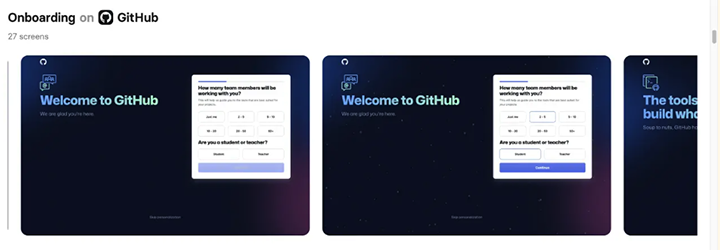
Mobbin and Pageflows offer product and onboarding audits and will save you countless hours (they’re paid products).
Tear down your own product’s onboarding by creating a visual map of the flow. To do this:
“Many products have way more than just one onboarding journey. It’s essential to regularly do reviews across different personas and use cases. You’ll uncover situations when some segments see absolutely irrelevant content after the sign-up page. Pro tip: check the second session in the product — usually a lot of unexpected notifications can pass there as leftovers of the first session.”
— Kate Syuma, ex-Head of Growth Design at Miro
“The key to layering in quantified funnel analysis is to focus on where you see churn that is causal with activation and retention.”
— Lauryn Isford, Head of Product Growth at Notion
I’ve found Posthog to be particularly great because the workflow from product analytics directly into recorded sessions is streamlined.

Check out the Onboarding Audit Template Figma file created by Growth Designers to kickstart this process. The example audits are especially useful.
You won’t get your onboarding right the first time. But that’s okay. The path to high-performing onboarding experiences is to design your initiative around learning. A common trap I’ve seen is for good research to balloon scope (let’s build what Airtable built!). Don’t fall into that trap!
Let the research inform a north star design and an iterative path to getting there.
“As a product leader working on your customer funnel, at least 25% of your focus should be on shipping with high velocity. A good rule of thumb is shipping improvements weekly. Compounding learnings from shipping fast and learning creates a positive feedback loop for your team and ultimately your customers!”
— Gaurav Vohra, Head of Growth at Superhuman
At Dropbox, our Growth team would often organize around a north star with three evolving iterative product milestones. Each milestone had a hypothesis, a learning goal, and a success metric. The first milestone is the most important because it should be the minimum amount needed to test if the overall north star hypothesis is valid. We would take the learnings from milestone 1 as input to future milestones or stop the work.
The key is to prioritize getting something live to users fast. Smaller iterations with compounding learnings will result in higher-quality onboarding. Second iterations are a must-have to get impactful results and sometimes you will need even more.
“While the experiment is running and your team has time, it’s good to find additional ways to extract learnings and insights. For example, run interviews with your running experiment to learn why it may or may not work and to start generating new hypotheses for the next iteration.”
— Kate Syuma, ex-Head of Growth Design at Miro
Armed with the research you’ve done, you’ll now want to look towards the future by designing the ideal end-to-end onboarding journey. To start, define the most important moments of their journey: Setup, Aha moment, and Habit loop.


The setup moment is the first time a user touches your product.
To determine your setup moment, figure out what is necessary for a user to set up in order to reach the aha moment. Don’t fall into the trap of having them set up all things — only what’s necessary. Consider progressive disclosure, especially if the product is particularly deep or requires a lot of exploration.
Common setup steps include:
“Learning how to use a new product is exhausting! Set your users up for success by ensuring that setup is an exchange of value — every time they work hard to give you information or to onboard to your product, reflect that hard work immediately back to them with relevant, personalized, or magical experiences.”
— Lauryn Isford, Head of Product Growth at Notion

Read the benefits of asking profiling questions during setup from Elena Verna.

“Your activation milestone (often referred to as your “aha moment”) is the earliest point in your onboarding flow that, by showing your product’s value, is predictive of long-term retention. A user is typically considered activated when they reach this milestone. A good activation event is often associated with the beginnings of a user forming a new habit inside the product, and since increasing activation rate is one of the best levers for increasing retention, it’s often a major focus for growth teams.”
— What is a good activation rate? Lenny’s newsletter
The aha moment is the most important moment of your onboarding, so spend some time making sure you really understand this for your users and that it maps to the jobs-to-be-done you established earlier. The aha is critical because you’ll try reducing the time to their aha moment as much as possible.
“Loom’s aha moment is when a creator gets their first view. It’s indicative of the creator closing a full feedback loop — not only have they conquered any psychological and cognitive barriers to recording a Loom, but they’ve also reaped the benefits of recording (supercharged their productivity or canceled a synchronous meeting).”
— Janie Lee, Head of Product at Loom
“Superhuman’s a-ha moment is when a user has taken 50 ‘clearing actions’. A clearing action is when a user does one of the following to an email: mark done, snooze, trash, move to folder, mark spam, unsubscribe. 50 is low enough that it can happen in the first few days and high enough that users cannot accidentally reach it. A user who meets this condition fundamentally ‘gets’ the Superhuman email workflow and inbox zero, and is significantly more likely to retain.”
— Gaurav Vohra, Head of Growth at Superhuman

A user’s habit loop is when they repeatedly perform the aha moment in your app within a time period that will keep them coming back. To determine your habit loop, decide how many times and how often a user should be performing those actions to be a healthy, retained user. A few examples:
You’ll want to design an onboarding experience that guides users toward a pattern of usage after they experience the aha.
“Superhuman’s primary habit loop is clearing actions and a feeling of progress toward inbox zero. A user’s first habit loop is to get used to clearing emails. Their second (stronger) habit loop is to regularly hit inbox zero — ideally at least once weekly. We have strong rewards built into the product for hitting inbox zero and are currently building loop reinforcement around clearing actions.”
— Gaurav Vohra, Head of Growth at Superhuman
More reading:
Don’t expect a user will just know how to use your product or why it’s valuable. Plan on creating an onboarding experience that guides the user to value that’s relevant to them.
The work you did understanding your users, auditing other products, and identifying points of friction should arm you with hypotheses for an effective onboarding experience.
Here are some of the most common onboarding patterns and when you might consider using them. These aren’t mutually exclusive; you can mix and match.
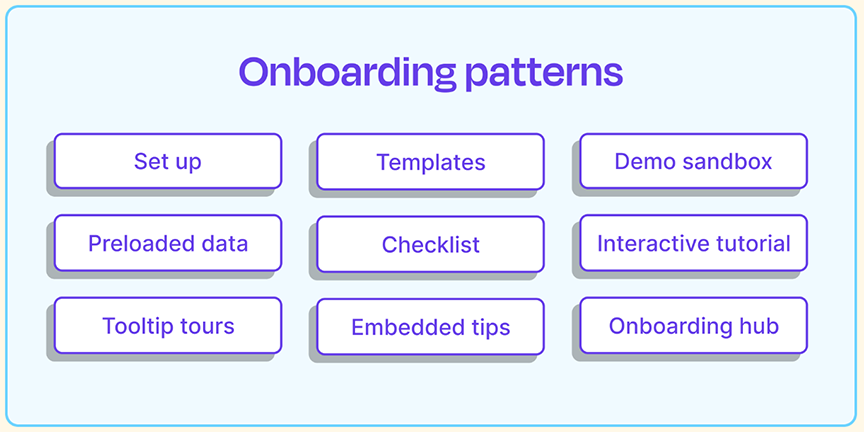
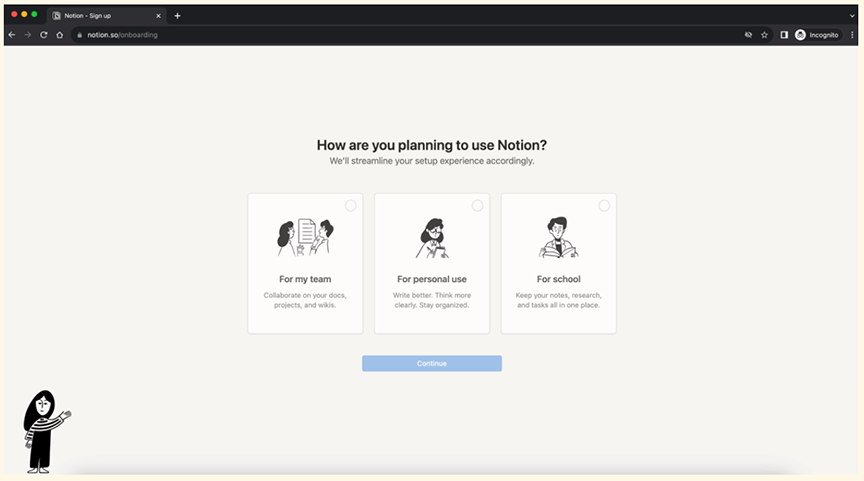
Essential setup is the initial getting started experience, often a wizard, that guides users through to their setup moment.
Great for
Why they work
Drawbacks
“This is the moment to get the information needed to reflect value and personalization back. It’s important to keep it short and sweet.”
— Lauryn Isford, Head of Product Growth at Notion
Examples: Notion, Dropbox, Loom, Attio, Linear
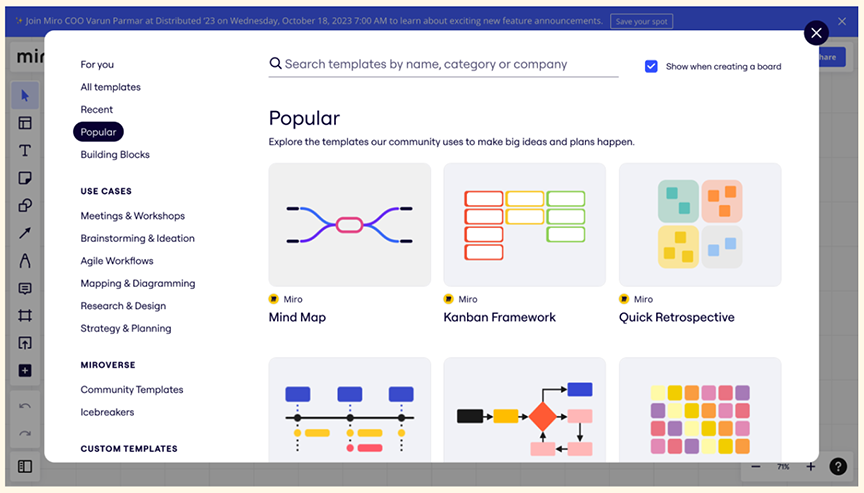
Templates give users the option to start with a pre-built solution to a relevant use case.
Great for
Why they work
Drawbacks
Pro-tip with templates: if you ask users what they’re trying to accomplish during setup, an easy win is to present the user with templates for those use cases.
Examples: Miro, Figma, Notion, Airtable, Github
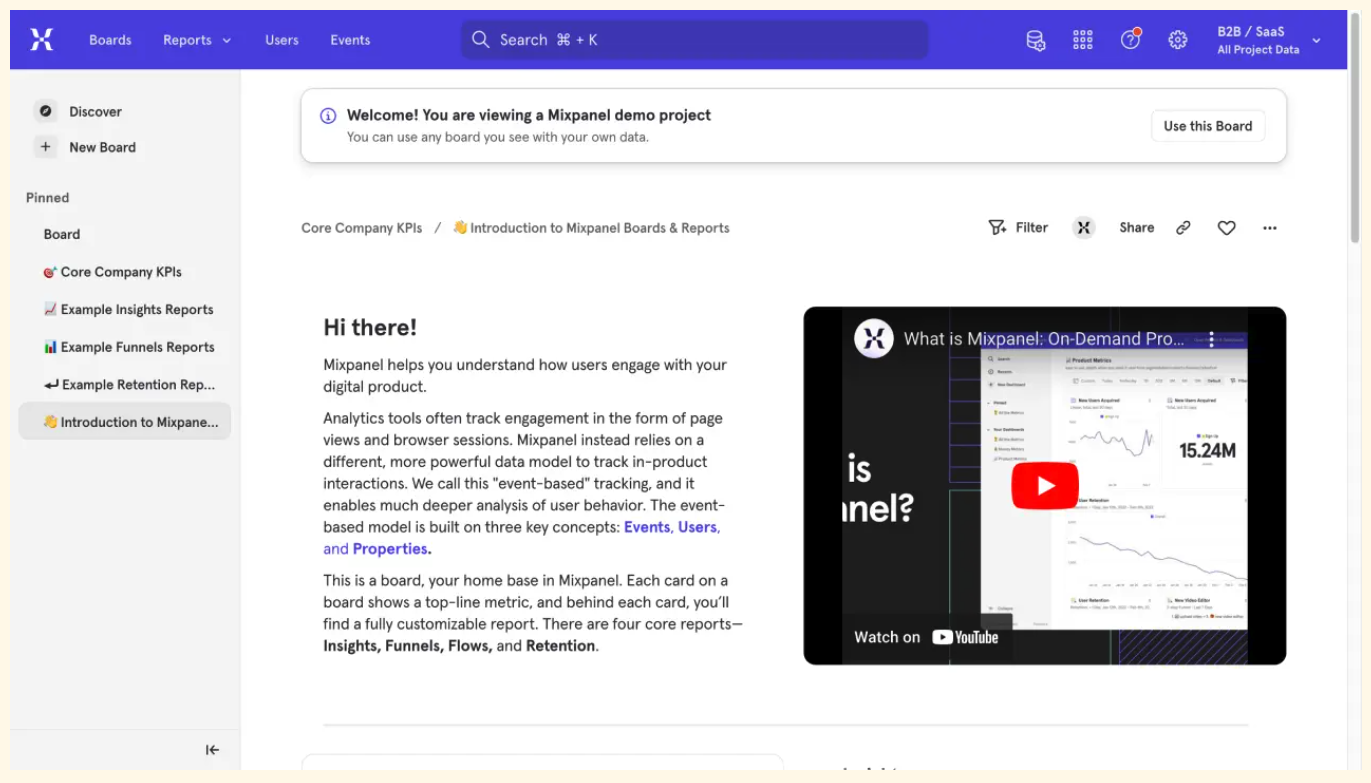
A demo sandbox is a separate mode or workspace that demos what the product looks like when it’s completely set up.
Great for
Why they work
Drawbacks
Examples: Mixpanel, Stripe, Vercel, New Relic
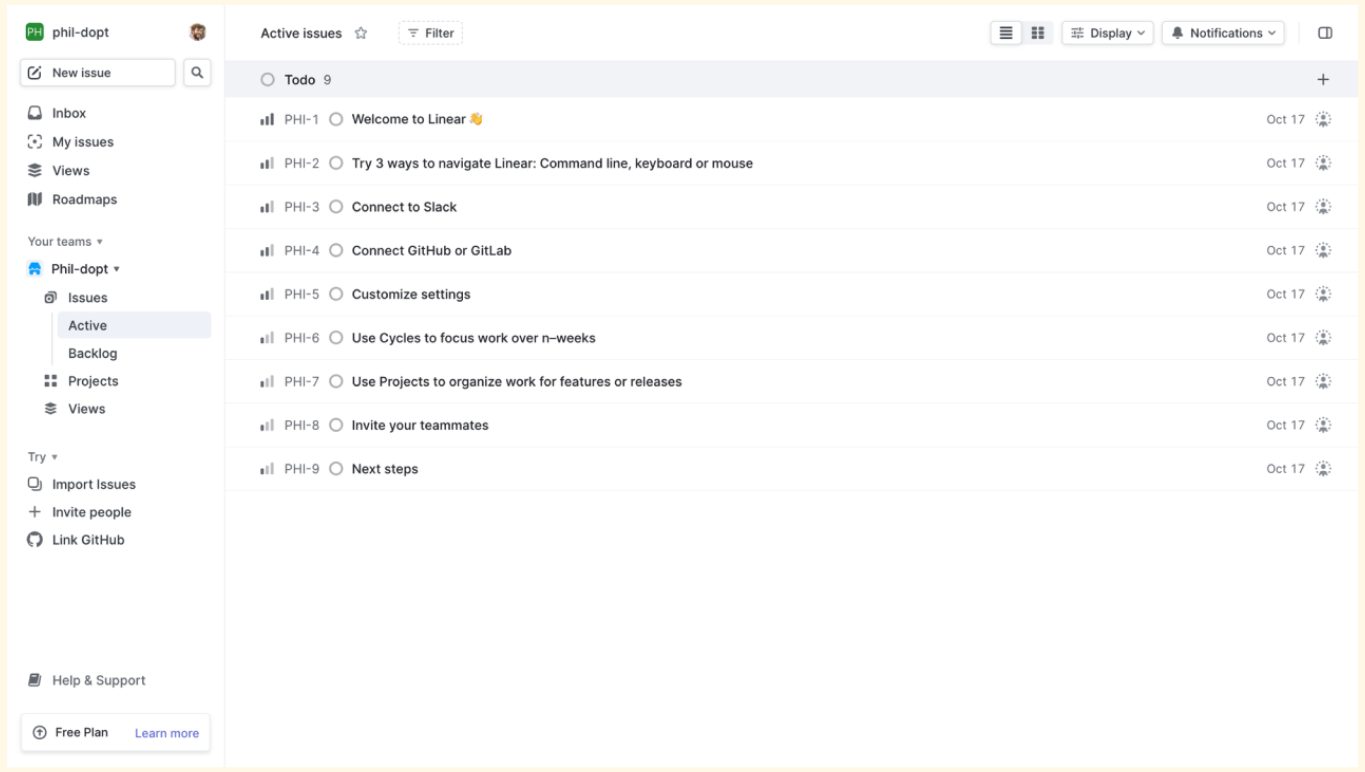
Many products start with data preloaded in their product. For example, Linear starts you with a few issues.
Great for
Why they work
Drawbacks
“We pre-populated new users’ libraries with Looms recorded by people who had the same functional background (e.g. marketing) as them. This not only gave exploratory users a way to experience what viewing a Loom was like but also served as onboarding content that taught role-specific use cases.”
— Janie Lee, Head of Product at Loom
Examples: Linear, Superhuman, Front, Hex
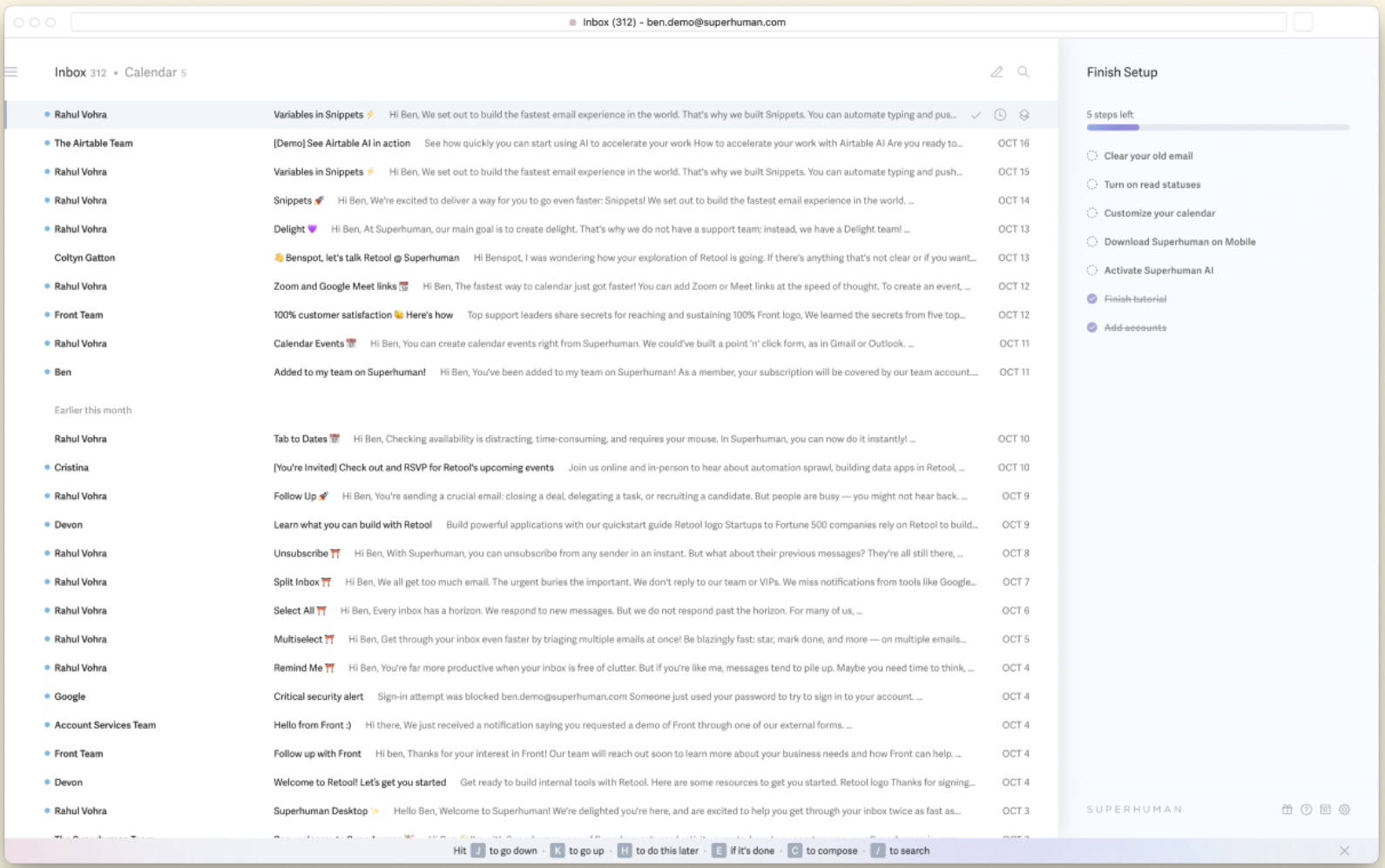
Checklists give users a series of steps to guide them toward the aha moment and other important actions. A best practice is to keep checklists action-oriented and optional or dismissible.
Great for
Why they work
Drawbacks
“A checklist is an extremely simple way to help users take crucial ‘set up’ steps, such as opting into settings and getting your app on another device. Rewarding users early with visual progress helps create early wins. Meanwhile, having users invest in setup creates a small endowment effect. Both contribute to users being more likely to keep using your app early on in their journey.”
— Gaurav Vohra, Head of Growth at Superhuman
Examples: Superhuman, Loom, Posthog, Replit, Shopify
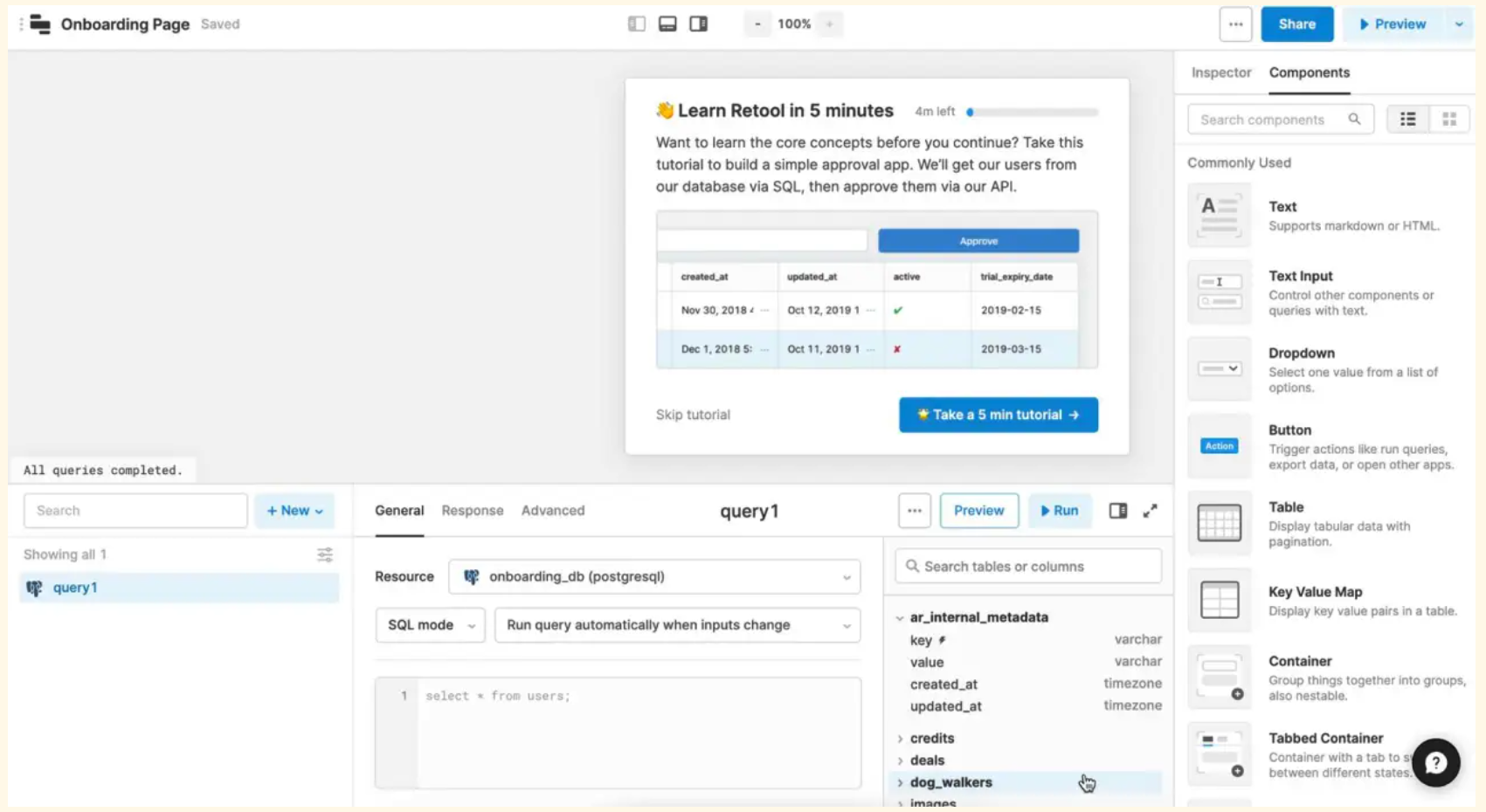
An interactive tutorial is a scripted, interactive guide through a product. The experience is in a sandbox and often incorporates user actions to complete key steps. The most well-known example is Slack’s onboarding, where the guide prompts you to actually send a message.
This pattern is borrowed from games like Cut the Rope, where the user learns how to cut the rope by performing an action — cutting the rope! And then continues to slightly more complex concepts leading to the aha moment.
Great for
Why they work
Drawbacks
Examples: Retool, Superhuman, Intercom, Slack
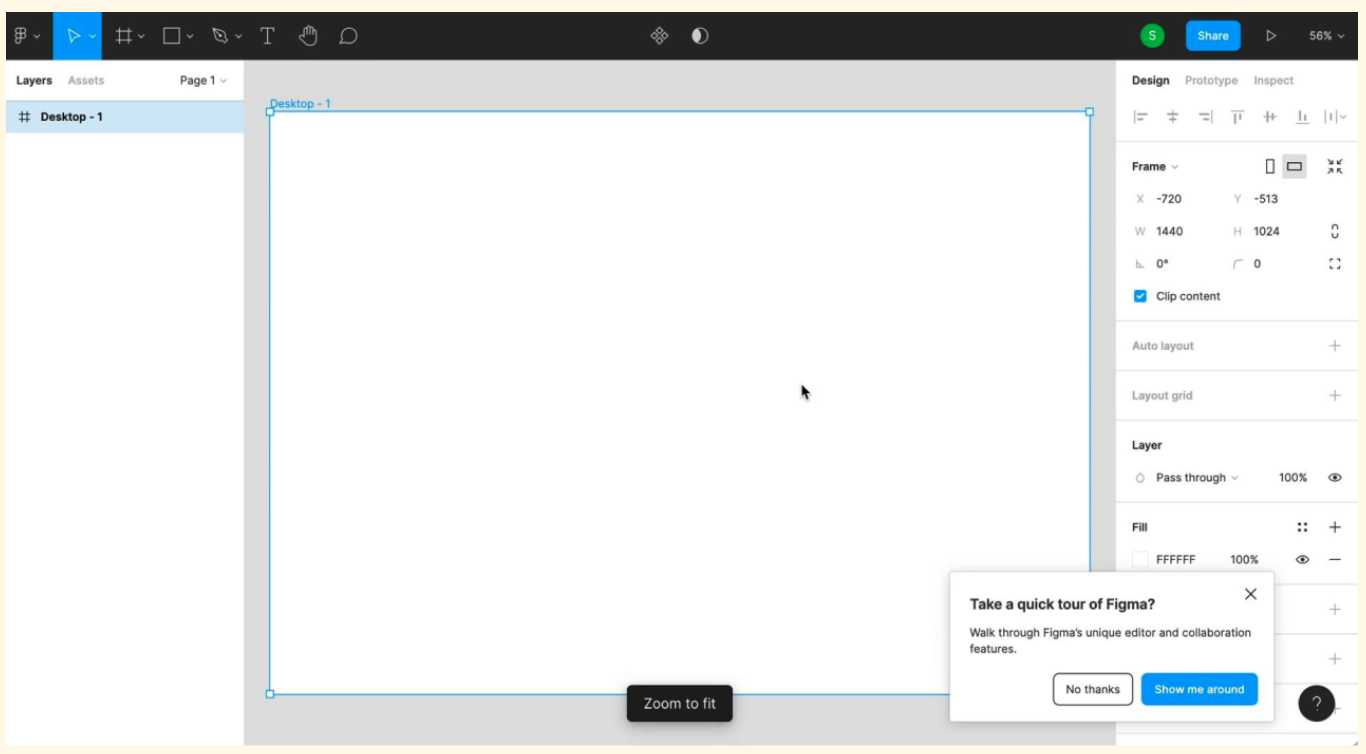
The most polarizing pattern, everyone loves to hate tooltip tours. And for good reason! They’re usually long and distracting. But (and hear me out) tooltip tours aren’t inherently bad; they’re just misused.
The best tours are one to three steps. They have a starting tip that explains the value of the feature and should be able to stand alone. If there are more steps, they should be opt-in. Keep them action-oriented, where the user performs an action rather than enumerating features. An 8-step tour that points out UI elements one after another will not work well.
Great for
Why they work
Drawbacks
“Tooltips are actually pretty hard to learn from! They’re a fast, transient series of information tidbits that you have to memorize — that’s a lot to ask of a new user.” — Lauryn Isford, Head of Product Growth at Notion
Examples: Figma, Productboard, Attio, Ramp
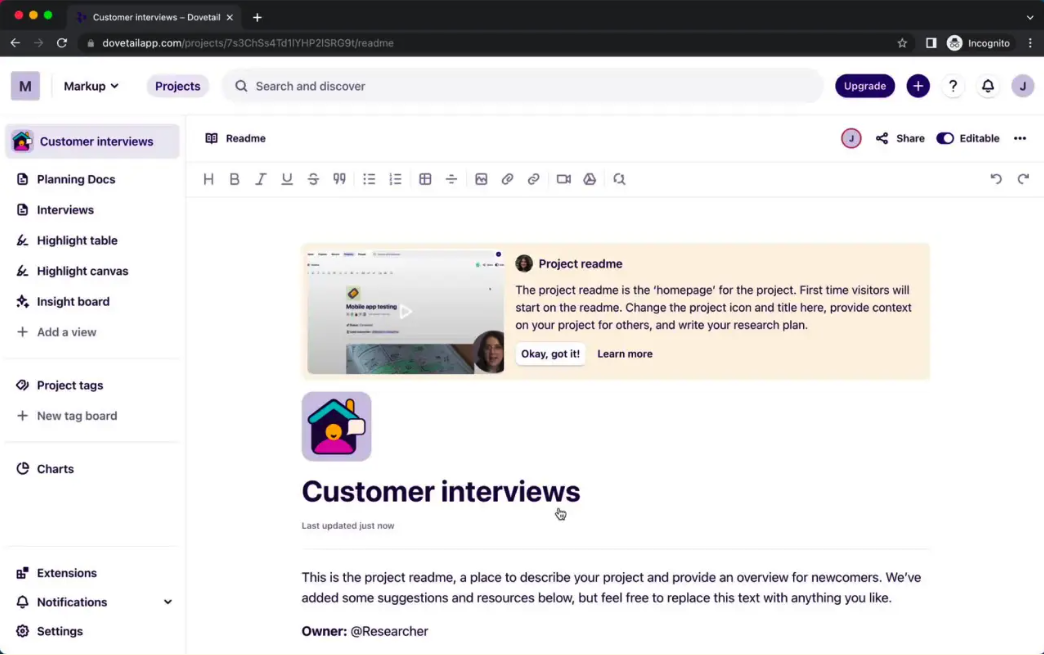
Embedded tips are simple callouts or educational tips in your product (rather than overlaid).
Great for
Why they work
Drawbacks
Examples: Dovetail, Stripe, Dropbox, Brex, Zapier
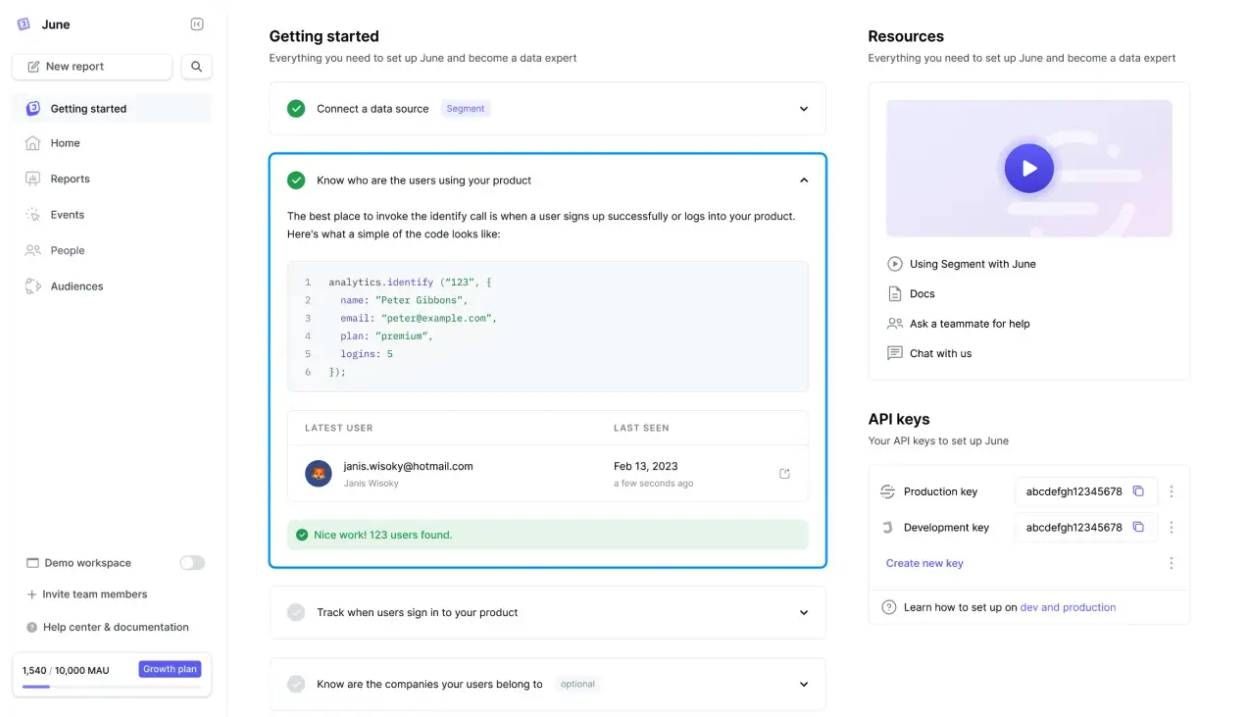
An onboarding hub is a centralized place in your app where the user can return for onboarding and help. This is often a mix of the patterns above and could include a checklist, embedded tips, and entry points to interactive tours, documentation, and support. The onboarding hub typically has a permanent place in the navigation until dismissed or completed.
Great for
Why they work
Drawbacks
Examples: June, Framer, Hubspot, Retool
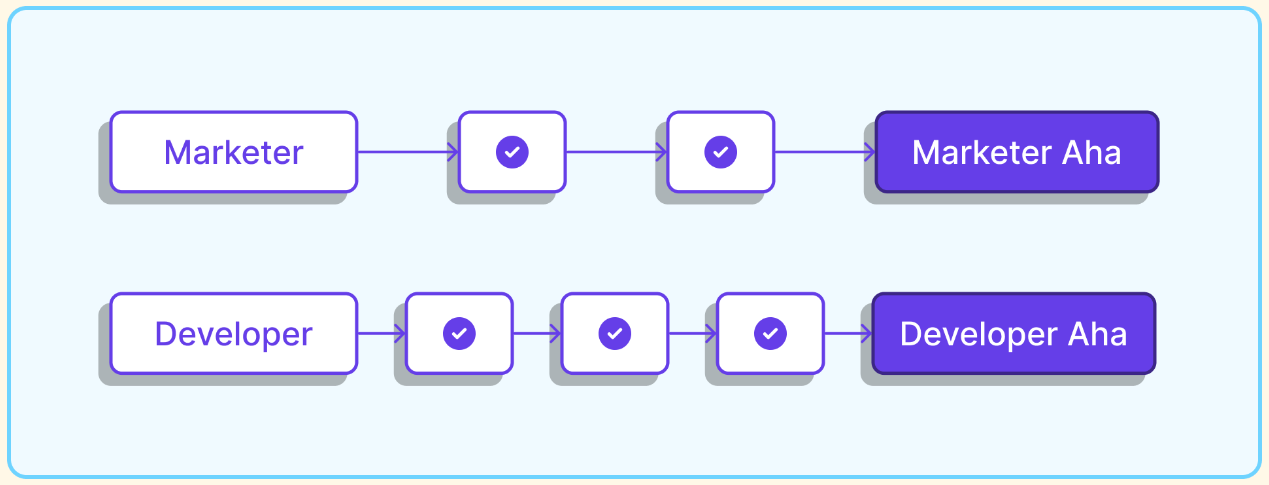
After you nail your new user onboarding, the most effective way to level it up is to tailor your onboarding experience to the different types of users. The most common types of tailoring are based on:
“Collecting the right information about your users from the early days of the product will serve you in the long run — roles, experience, goals, etc. become a great foundation for personalization.”
— Kate Syuma, ex-Head of Growth Design at Miro
Read this 5-step playbook for creating tailored user onboarding experiences to get started.
For B2B products, your ultimate goal is to activate and sell to the account. Activating a user is the first step on that path, but it’s never enough. You must activate their collaborators, team, and then the broader company. A few pointers:
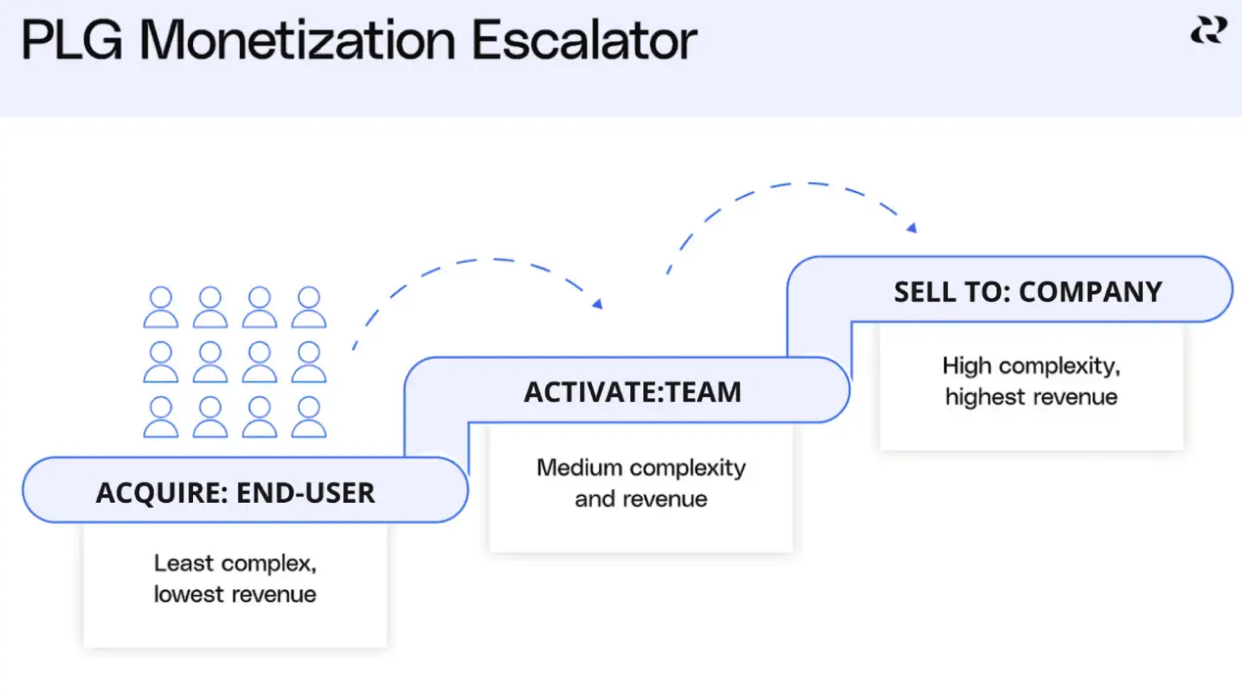
Read Hey B2B: I bet you are measuring activation wrong by Elena Verna for more.
As the first touch in the user journey, your website sets the stage for the entire user journey, answering key questions: What is your product? What problem does it solve? Why is it better than alternatives?
Your website shapes your user’s intent as they start the onboarding, so clarity matters. Focus on creating simple and clear copy, product-oriented imagery, and clear CTAs.
You’re teeing up a value promise and building momentum — it’s on your onboarding to deliver on that promise. If your user enters your product looking for the wrong thing, then your onboarding will fail from the get-go.
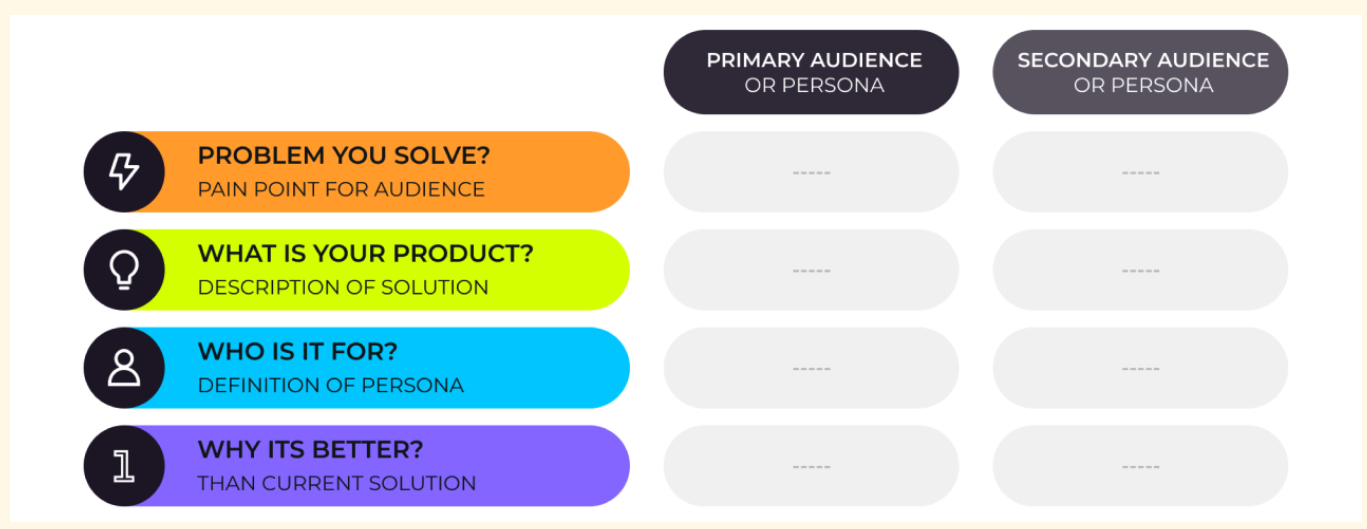
Read How to create a more effective homepage by MKT1, the best post I’ve found on creating a solid homepage.
Combine your product-led onboarding with support and sales to power a cohesive journey. Some users will get stuck and some users will want personalized hand-holding. For example, a developer will rarely want to talk with a person while an admin or buyer is much more likely.
A few ways to fold these motions in:

“In our web app, Loom users can access our Help Center, reach out to Support, or give feedback within the same entry point. It’s not only provided a persistent mechanism for users to self-serve help and documentation, it’s also enabled our Support team to scale.
For more qualified paying customers, we also have created an entry point for admins to chat with our Sales team. This entry point continues to be one of the most impactful sources of pipeline for the Sales team.”
— Janie Lee, Head of Product at Loom
Async channels like email and mobile are great for welcoming users with a great first step and getting users to come back to the app after their first initial session. They’re especially effective when based on in-app behaviors (or lack of behaviors), reinforcing key value props and good next steps in the journey.
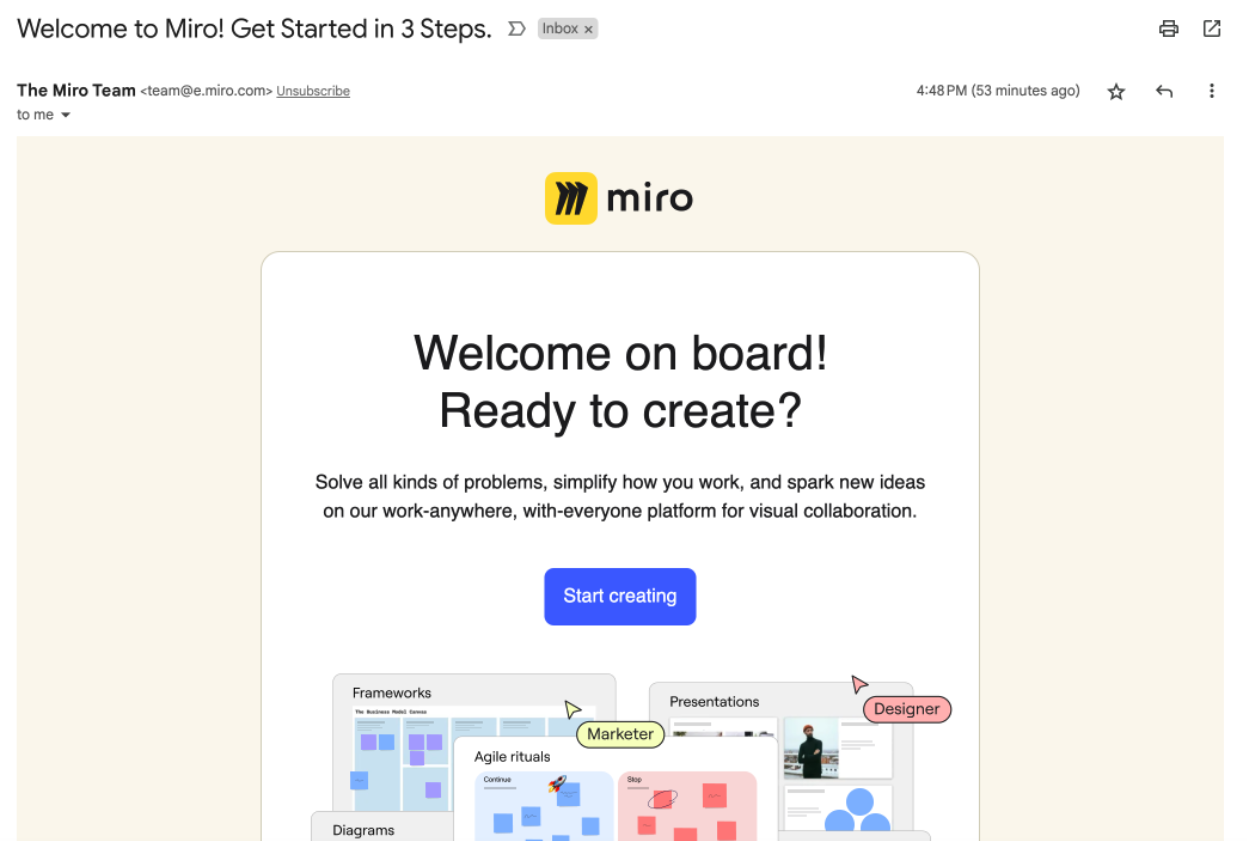
“Your first five minutes of onboarding are crucial, but so are your next 24-72 hours. Email and SMS are both great vectors to help users realize deeper value. Think carefully about what your ideal user’s “happy path” looks like, and craft messages that help nudge them onto that path.”
— Gaurav Vohra, Head of Growth at Superhuman
Here’s How to Build a Behavior-Based Product-Led Onboarding Email Campaign.
A user is always trying to discover and understand the value of your product. After initial onboarding is done, the next step is to consider the key tasks they need to accomplish in your product to get reoccurring or deeper levels of value. Design experiences to help users more easily discover and understand how to complete those tasks. Relevance is key for continuous onboarding.
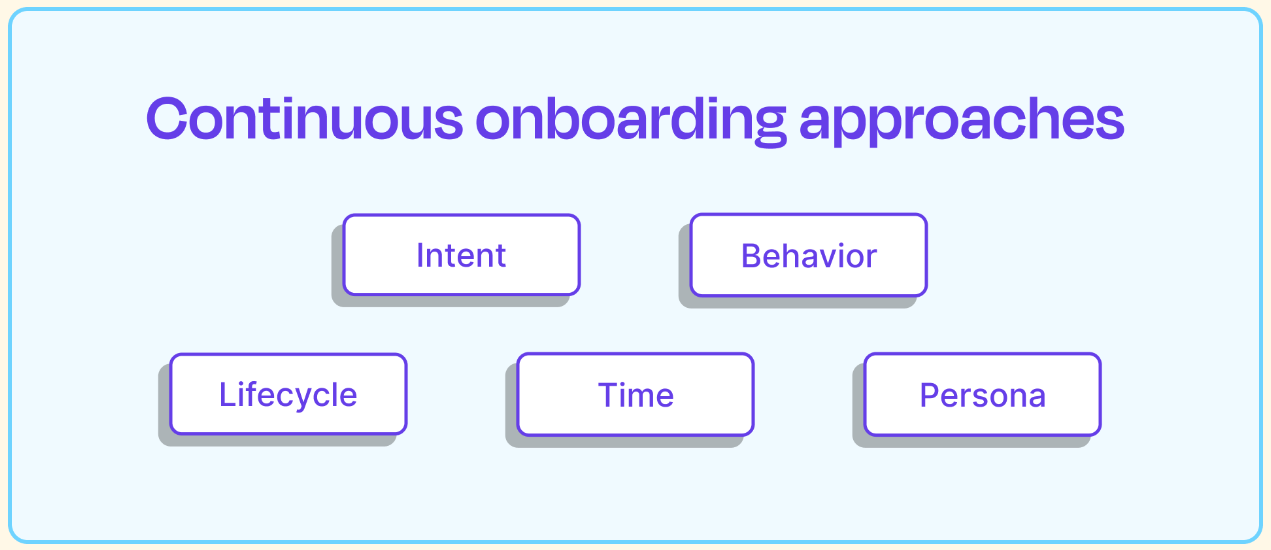
Here’s how to design great, relevant continuous onboarding:
“We are always learning in our day-to-day lives — the same is true in a product! Don’t let the opportunity to educate stop in the very first session.”
— Lauryn Isford, Head of Product Growth at Notion
This article was originally published here on the Dopt blog.